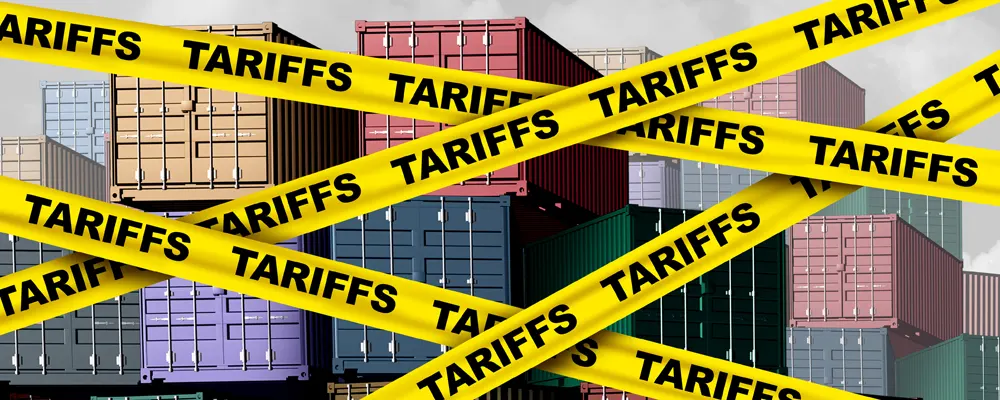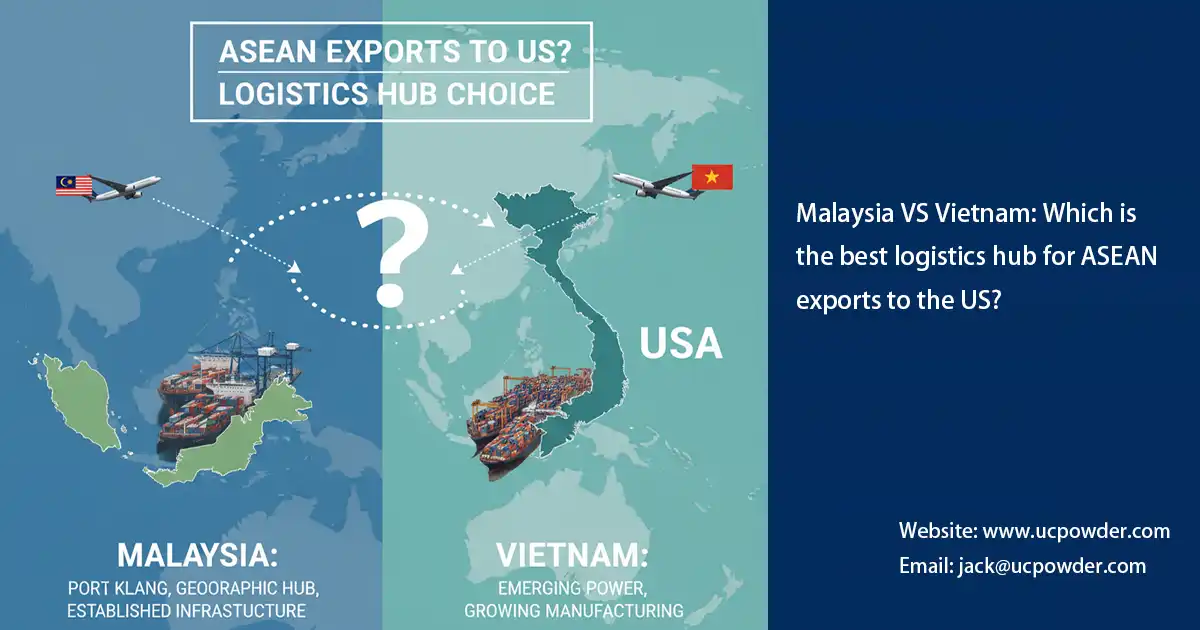How to avoid high US tariffs: A legal and compliance guide for transit trade

The latest tariff policy of the United States and its impact
The US tariffs are intended to protect domestic industries, but often lead to increased costs for importers. The main policies include:
- 301 tariffs: tariffs of up to 25% or more are imposed on some Chinese goods.
- Anti-dumping duties: penalties for goods sold below fair market value, sometimes exceeding 100%.
- Section 232 tariffs: Applicable to steel and aluminum imports for national security reasons.
These measures bring the following challenges:
- Increased landed costs: tariffs raise the cost of goods and squeeze profit margins.
- Regulatory complexity: Complying with the regulations of the US Customs Service requires precise documents.
- Supply chain disruptions: policy changes lead to delays and uncertainties.
What is transit trade and how does it work?
- Shipping to Malaysia: Goods arrive at a Malaysian port, such as Port Klang, and are typically stored in a bonded warehouse.
- Secondary processing: Minimal activities such as repackaging, relabeling, or assembly may be performed to meet origin requirements.
- Preparation of customs clearance documents: Preparation of extensive customs clearance paperwork, including certificates of origin, to comply with U.S. customs regulations.
- Re-export of goods: Secondary processed goods are shipped from their country of origin in Malaysia to the United States to qualify for reduced tariffs.
- U.S. import clearance: Once the goods arrive at U.S. customs, all compliance clearance documents are submitted to ensure smooth entry into the U.S. market.
If executed properly, transit trade is a completely legal strategy that complies with international trade laws, including those enforced by the World Trade Organization (WTO) and the U.S. Customs Service.

Transit Trade Legal Guidelines
To legally avoid high U.S. tariffs, businesses must follow strict guidelines. Here are the key legal considerations:
- Substantial Transformation Rul: U.S. customs authorities determine the country of origin based on where a product undergoes a “substantial transformation,” a process that significantly changes its characteristics, use, or name. We reassemble, process, or combine components in our bonded warehouse in Malaysia to qualify as Malaysian origin, depending on the circumstances and U.S. import laws.
- Accurate Certificate of Origin: The Certificate of Origin (CO) is used to verify the country where the goods were produced or processed. The Malaysian government is strict about issuing certificates of origin. But TNS Logistics has been engaged in cross-border cargo transportation services in Malaysia for many years and has very rich customs connections and resources. We can easily provide customers with a variety of certificates of origin, which is why we can become Malaysia’s top shipping service agent.
- Comply with free trade agreements: Malaysia’s free trade agreements, such as the Regional Comprehensive Economic Partnership (RCEP), allow goods processed in Malaysia to qualify for preferential tariffs in the United States. Our professional service team includes not only the elites of the legal profession but also the veterans of the shipping agency industry. We have the ability to ensure that your goods can take advantage of these agreements after taking advantage of the re-export trade.
- Anti-dumping duty avoidance:In order to avoid being subject to anti-dumping duties, the prices of goods exported to the United States must not be distorted or underestimated. Our freight forwarding service team will conduct a thorough audit of your goods to ensure that the pricing and documents meet the fair market value standards. Your goods will not be subject to high anti-dumping duties.
What can we do for you?
- Prepare various cumbersome and professional customs documents.
- Coordinate with Malaysian ports and authorities to complete the import and export process of goods.
- Avoid the penalties and risks that may arise from the import and export international trade regulations of various countries.
- Process transaction and transportation records: We cross-check all paperwork to prevent errors that may trigger US customs inspections.
- Provide bonded warehouses: We have numerous warehouses in Malaysia's bonded areas that can provide storage and reprocessing services.
- Conduct regular audits: Regularly review the transshipment process to ensure that all procedures and processes are compliant. Our professional audit team can help you identify and address potential risks.
Why Malaysia is an ideal place for transit trade?
- Strategic location: Malaysia is located along the Strait of Malacca, providing quick access to global markets.
- Advanced infrastructure: Ports such as Port Klang handle more than 13 million TEUs per year and are supported by modern warehousing and port management technology.
- Regulatory expertise: Malaysian customs authorities streamline the transshipment process with clear guidelines.
- Cost efficiency: Competitive operating costs make Malaysia more affordable than Singapore or Hong Kong.
- Trade agreements: Free trade agreements increase tariff savings on goods re-exported from Malaysia.
Our freight forwarding company leverages these advantages to provide seamless transit trade solutions.
Why choose our freight forwarding services?
With decades of experience, our team in Malaysia provides:
- End-to-end expertise: From shipment to customs clearance, we manage every step.
- Compliance assurance: We comply with US and international trade laws.
- Cost savings: Tailor-made strategies minimize tariffs.
- Trusted Network: Partnership with Malaysian ports and customs ensures efficiency.
- Proven Results: Millions of dollars in savings for clients across industries.
Conclusion
Comply with Total Tariffs for Transit Trade
High U.S. tariffs don’t have to derail your business. By leveraging Malaysia’s transit trade capabilities and following legal and compliance guidelines, you can significantly reduce costs while remaining fully compliant. Our freight forwarding team in Malaysia will guide you every step of the way, ensuring seamless, penalty-free operations.
Ready to legally avoid tariffs? Contact us today to explore how transit trade can transform your global trade strategy. Let’s build a compliant, cost-effective future together.
You may also be interested in

Malaysia VS Vietnam: Which is the best logistics hub for ASEAN exports to the US?
Malaysia VS Vietnam: Which is the best logistics hub for ASEAN exports to the US? Are you looking for the best logistics hub for ASEAN

Top 10 Container Shipping Companies in the World (2024)
Top 10 Container Shipping Companies in the World (2024) In 2024, the global shipping industry will continue to be dominated by a few key players.

Top Challenges in Ocean Freight and How to Overcome Them
Top Challenges in Ocean Freight and How to Overcome Them When it comes to ocean freight, it’s not all smooth sailing. This mode of transport

War Risk & Strike Insurance: Shield Your Shipments
War Risk & Strike Insurance: Shield Your Shipments From the Red Sea crisis to European port strikes, the global shipping industry is experiencing unprecedented turmoil.While






